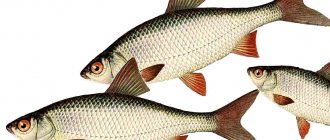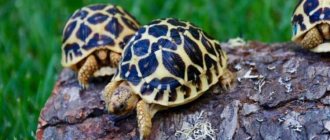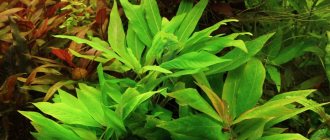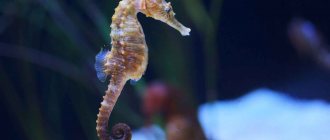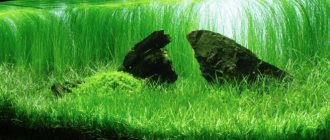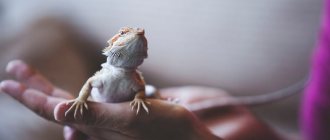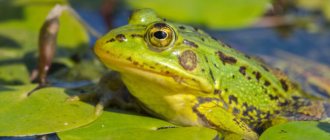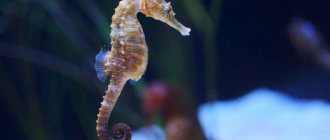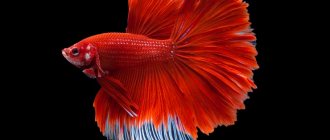The sea urchin (Echinoidea) is a unique animal in appearance that lives in the depths of the salty waters of the Pacific Ocean. Most of the species, despite their terrifying “prickly” appearance, are absolutely safe for humans. Some can even be picked up without fear of getting hurt by a sharp needle, while others have such small spines that they seem velvety to the touch. But there are also poisonous representatives of these marine inhabitants. It is a useful object from a culinary and medicinal point of view, and is also popular for cosmetic purposes. Sea urchin caviar is considered especially useful and valuable.
Kinds
The class of these echinoderms is very numerous. Therefore, animals belonging to it are conventionally divided into two subclasses. The first group is regular hedgehogs, that is, those whose body shape is spherical. The body of irregular echinoderms is more like a stretched disc. There are more than 900 species of animals, some of which are very common. These include: Black sea urchins, which have long spines. This animal poses a great danger to humans, as it has long spines. An interesting fact is that the beauty of a black hedgehog can quickly turn into its weapon: at any sign of danger, it directs its needles towards the irritant. That is, a shadow from any object falling on him can be regarded as an attack.
A round sea urchin that can also be dangerous to humans. It is one of the most common types.
Japanese sea urchin. The name tells you where it lives. This representative of echinoderms can attack a person if it senses danger emanating from it.
Slate sea urchin, which is distinguished by its amazing red color. Its needles have an unusual triangle shape with a blunt apex. According to one version, it got its name due to the fact that in ancient times they used its needles to write on slate boards.
A species such as a diadem is very dangerous for humans. At the slightest sign of danger, the animal pierces the skin of the victim with fragile needles, and they break. The process of removing them is very painful. This species is often found near the Turkish shores beloved by tourists.
Varieties of underwater urchins
In nature, there are more than 900 species of animals belonging to this class. Some species are quite widely represented, while others are extremely rare. The most common ones include:
- black sea urchin;
- round;
- Japanese;
- slate;
- diadem.
The black sea urchin looks the most menacing, as it has some of the longest spines, which pose a considerable danger to humans. When danger arises, the animal immediately points its weapon towards a potential enemy and behaves very aggressively.
The round type is one of the most common, and also has impressively sized needles that can seriously injure a person. The Japanese species lives in the sea of the same name and is a staple in Japanese restaurants. Slate - distinguished by its bright red color and triangular shape of needles, which do not have sharp ends and are therefore completely safe.
The tiara species poses an increased danger to humans, as it likes to settle near Turkish resort beaches. The needles of this species are very fragile, and if a person was careless to step on such a creature, then in the future he will have to undergo a painful procedure to remove the needles that have penetrated the skin.
Sea urchins play an important role in the ecosystem because they are able to absorb carbon dioxide, thereby reducing its amount in the atmosphere. The entrails of these animals have been used for the manufacture of various medicines since ancient times.
Habitats
Sea urchins live only in warm waters with high salinity levels and are never found in fresh water. The bottom of all oceans is inhabited by various species of these animals. The most numerous populations live:
- in the Indian Ocean;
- in the Caribbean;
- on the east coast of Australia, washed by the Pacific Ocean;
- in the waters of the Hawaiian Islands.
Colonies of echinoderms can be found both at shallow depths in the area of underwater rocks and on deep-sea reefs. In shallow sea bays, as a rule, there are “spines” with a spherical body shape.
Flat-bodied species live at deeper depths. These creatures have never been seen in the basins of the Black and Caspian Seas, since the salinity level of the water in these reservoirs is extremely low.
Selection rules
The animals in question do not live in fresh water, so residents of Central Russia can only buy caviar or canned marine life. It’s not difficult to choose a product here: just pay attention to the expiration date. But when choosing fresh hedgehogs you need to put in more effort. The main signs of a correct, fresh product:
- Size no more than 15 cm. Large specimens are poisonous and are not intended for human consumption.
- The shade is green, purple or dark red. Deep black needles are characteristic of poisonous representatives of marine fauna. It is recommended to study a photo of the edible species to understand what it looks like.
- The needles are hard. If they are already soft and drooping, the animal has died long ago.
- The mouth is tightly closed.
If there is caviar in the hedgehog, special attention should be paid to it. It should not be greenish, the natural shade is bright orange. You can only tell if the caviar is fresh at home, after opening the shell. And although it is unlikely that you will be able to return the product after this, you will be able to protect yourself from poisoning.
You can try fresh hedgehogs in a restaurant or buy them at the market in Montenegro, Japan, Korea and some other Asian countries. They are also found in the Mediterranean Sea, so they are served in Spain and Italy
Appearance
The body shape of sea urchins is spherical. The usual size is 6-12 cm. There are babies with sizes of 2-3 cm. The largest species reach 36 cm in diameter. The body color matches all the colors of the rainbow. In some species, the color can adapt to the color of the soil. But the shape of the body is always constant, since it is covered with armored plates. They are rigidly connected to each other and serve as reliable protection from external damage. There are no plates only near the mouth and anus.
One part of the animal’s body is always facing the seabed, in the center of which is the mouth. On the opposite side is the anus. This is like the opposite pole, called aboral. Between them along the meridians there are rows of protective ambulacral plates. There are several dozen of them in each row. The plates have small holes through which the legs come out.
At the aboral pole, each plate is equipped with a small eye. And next to it is a larger plate. It contains a reproductive cell. These plates surround the anus and make up the so-called apical field. And near the mouth opening there are gills. The animal's shell is dotted with numerous tubercles. Needles are attached to them through a special joint capsule equipped with very strong muscles. Thanks to them, the hedgehog can turn its needles in a variety of directions. The length of the needles reaches 1-3 cm, and the thickness is 1-2 mm. They are not very spicy.
There are some species with needles ranging from 10 to 30 cm in length. These natural spines help move and protect during attack. Some species have poisonous needles. The sea urchin breathes using gills. The senses are very primitive. The irregular subclass does not have a chewing apparatus, since plankton predominates in the diet.
HARM AND DANGEROUS PROPERTIES OF SEA URCHNISHES
The thin and sharp needles of hedgehogs pose a danger to humans. If you step on it, you can be seriously injured, since the needles usually break, leaving only small tips in the foot. And some of the hedgehogs are highly poisonous. Such species, once in the human body, cause a negative effect on the nervous system, paralysis, slow down the heart and make breathing difficult. The victim must immediately provide first aid by removing the needle elements and pedicillaria, and treating the stung area with an antiseptic solution.
It is also recommended to keep the affected area in the hottest water that a person can withstand, since it is believed that the poison disintegrates under thermal influence. It is advisable to take the victim to the hospital as soon as possible, where he will be under constant supervision. But even without poison, getting a needle under the skin is fraught with unpleasant consequences. Since, for the most part, bacteria located at the ends of needles cause suppuration of the wound.
Lifestyle
Spiny animals prefer to change their surroundings and wander around less often. The exception is during times of hunger, when food has to be looked for elsewhere, even far from home.
Sea urchin: what does it eat?
Moving along the bottom, the “spines” look for food, and flat urchins require plankton, while regular urchins need a variety of food. Their menu consists of red, brown, blue-green and green algae. They happily feed on mollusks, sponges, small crustaceans, do not refuse carrion and feast on starfish. Small fish and shrimp become victims of hedgehogs. In case of hunger, hedgehogs sometimes have to eat each other.
Large strongylocentrotus are not shy about snacking on mantis crabs. The inhabitants of the sandy bottom are able to swallow soil in which microscopic organisms live. If food runs out, colonies of sea urchins migrate to new places, without fear of long distances.
Grasping organs with spines take part in the capture of prey. Having injected poison into the prey, the predator uses pedicellaria to transfer food, as if along a chain, to the mouth. Holding food with the help of needles, it eats, biting off pieces.
Way to travel
Sea urchins use more than a thousand legs with suction cups to move, so they also climb vertical walls. To move along a horizontal surface, they use needles, leaning on them like stilts. Some hedgehogs like to move with the help of their teeth, pushing off with them after sharply closing and unclenching.
How do sea urchins reproduce?
These are dioecious animals that breed all year round, but the favorable time is warm days. Sea urchins begin mating at 2-3 years of age, and even at this age it is difficult to distinguish males from females. Sex cells are produced by five grape-shaped gonads (reproductive organs) that open at the top of the body.
Fertilization is external. Having found a suitable place where it is not deep, the female releases eggs that look like white or orange light smoke. The male, using the same smoke, fertilizes the eggs. Hedgehogs have to produce more than a million eggs for at least some of them to survive.
First, planktonic larvae emerge from the eggs, soon becoming oscillating balls with fibers, gradually turning into an adult sea urchin.
Interesting fact! Many small hedgehogs are carried to the depths by the current, where they die.
In some species living closer to Antarctica, eggs develop attached to spines. Children live with their mother until they are fully formed.
Enemies
Despite the hedgehogs being protected by spines, they are eaten by birds, large fish and lobsters, and mammals. The main thing to get to the meat is to break the strong defense. Birds do just that, throwing their caught prey from a height onto a rocky shore. Turquoise Acara cannot be placed in an aquarium next to small hedgehogs, but poisonous representatives of hedgehogs are not afraid of this fish.
This is interesting! The sea otter, sea otter, and sea urchin are attracted as a delicacy and nutritious food. Some animals, having caught prey, throw the hedgehog against stones to break the shell. But first he wraps it in stalks of algae and crushes it in his paws to break off the needles. Others gnaw through the shell with their teeth. A California otter places a 3-kilogram stone on itself and bangs its hedgehog against it until its shell breaks.
Lifespan
Sea urchins, on average, live up to 15 years, but some live 2 times longer; they are called centenarians. To find out the age of a hedgehog, the annual rings of the shell plates are counted. The life of pets depends on the living conditions, food and quality of care.
Needles
Lime sticks have a cylindrical shape. They are movably attached to the body, which allows them to easily rotate in different directions. They not only protect animals, but also help them move. Moreover, some of them have a grasping function.
In this case, it is customary to call these organs pedicellariae. Some of the needles contain poisonous glands that secrete a rather strong substance. Because these organs are shorter than others, regular needles move apart to release them. About 80 species of these animals are dangerous to humans due to their poison. The length of the needles can reach 30 cm in length.
Reproduction and lifespan
Sea urchins are both male and female, that is, they are dioecious. The female sea urchin lays her eggs in shallow water and the male fertilizes them. The species of these animals living in the Antarctic regions are viviparous. The eggs develop in a special brood chamber inside the female's body.
It is dangerous for a person to be injured by a sea urchin.
The sea urchin born in this way leaves the mother's body fully formed. At the age of 3 years, the spiny sea creatures reach sexual maturity. Life expectancy in the natural environment is 12-15 years. There have been cases when sea urchins reached the age of 35 years.
Body structure
Most people associate a sea urchin with a creature that has a huge number of sharp spines, which is not entirely true. Some species of these creatures do not have spines at all and pose absolutely no danger to humans. There are species whose body is covered with a mass of small needles, which are not only incapable of injuring a person, but also make the sea creature very pleasant to the touch.
Some species of sea urchins do not have spines at all and pose no danger to humans.
Sea urchins are the oldest animals that appeared on earth more than 500 million years ago. Their closest relatives include no less ancient creatures - starfish. Sea urchins can be roughly divided into 2 large groups - regular and irregular. These groups include 4 more superorders, consisting of 9 orders. This diversity of classification suggests that the World Ocean is home to a great variety of different species of sea urchins, differing in a number of characteristics:
- body shape;
- the structure of the body;
- color;
- way of life.
Unlike the starfish, the hedgehog has no prominent rays on its body, and the animal itself has the shape of a flat disk or ball. The group of irregular hedgehogs includes creatures that are egg- or heart-shaped. Since the animal’s body is enclosed in a durable shell consisting of several plates, its shape remains unchanged throughout its life.
The closest relatives of sea urchins include starfish.
The structure of the shell is always the same . It consists of plates located along the meridians of the body. The mouth opening is located on the abdomen and always faces the bottom. On the opposite side is the anus. Near the mouth opening there are external gills and spheridia - organs responsible for balance.
In the depths of the mouth there is a chewing apparatus, consisting of several plates connected by muscles. The basis of the oral apparatus is 5 paired pyramids in which the teeth are located. Using its teeth, the animal scrapes algae from hard surfaces and captures a variety of food.
From the mouth to the anus there are ambulacral plates, each of which has several paired holes. The legs pass through these holes.
Nutritional nature
Representatives belonging to the wrong subclass mainly feed on small plankton. The diet of proper hedgehogs is more varied. Proper sea urchins eat:
- a variety of algae;
- ascidians;
- shellfish;
- bryozoans;
- sponges;
- various carrion.
Cases of cannibalism are not uncommon among some species of sea urchins.
Large individuals can switch to feeding on small-sized starfish. Cases of cannibalism are not uncommon among some species. The largest representatives of this family, such as Strongylocentrotus, are able to catch and eat a mantis crab. Species that live on sandy soil or other soft substrates swallow bottom soil along with the microscopic organisms living in it. If there is no food in the area of the reservoir where sea urchins live, they can make significant migrations in search of food.
Enemies
At first glance, the sea urchin is well protected. But still it becomes prey for large fish, birds and mammals. The sea otter loves to feast on the meat of this animal. She takes the hedgehog with her paws, throws it onto the coastal rocks and breaks the protective shell. Birds do the same. A large feathered predator grabs a hedgehog with its beak during low tide, rises high into the air and throws its prey onto the rocks. The soft pieces of the body are then pecked out.
USE IN COSMETOLOGY
It is with the consumption of meat, and especially caviar, sea urchins that the long life expectancy of the Japanese is associated. Japan has a national holiday that occurs once a year. On this day, you must buy a sea urchin and, having opened its shell, drink the liquid it contains and eat a piece of caviar. This ritual allows you to completely rejuvenate and refresh the body. Sea urchin meat and caviar are considered the elixir of youth and beauty.
Sesame, saffron, noni, sea cucumber, beebread and yarsagumba also have properties similar to it in action. The immune system of these marine representatives contributes to its longevity and immortality. He can live up to 200 years without aging or losing the ability to procreate. Recently, American scientists found that its DNA is 70% identical to human DNA. Therefore, the use of this product gives the opportunity to rejuvenate the body, increase physical and mental abilities.
CULINARY APPLICATION
Sea urchin meat and caviar are used to prepare sushi, salads, and other cold dishes. They are often eaten fresh. If the caviar is bitter, you can add a few drops of lemon juice or soy sauce. In European cuisine, caviar undergoes heat treatment: it is fried and baked.
With its help you can cook: Italian pasta or spaghetti; pates; various sauces; spices. In Italy, sea urchins are also served with dessert dishes. Granite ice cream, which is made from fruit juice mixed with alcohol, is in great demand. Champagne is often used for this, which goes well with the meat of these sea creatures.
The benefits of sea urchin caviar
If you decide to order this unusual seafood dish and the hedgehog itself on the tray in front of you is still alive, and its needles are slowly moving, then you can eat a real elixir of youth and absorb dozens of unique nutrients, vitamins and bioactive compounds. The benefits of eating sea urchins will make themselves felt quickly: within half an hour, a slight, pleasant feeling of strength will appear throughout the body, and after an hour, a clearly visible physiological euphoria will surge, which can be compared with the effects of a good massage, sports training, or even sex.
So, having eaten a portion of sea urchin caviar on a gloomy February morning, our body will receive:
- fat-soluble vitamins A, D, E and water-soluble vitamins C, B6, P - niacin, B2 - riboflavin, B1 - thiamine, folacin, etc.
- biologically active substances: homarin, carnitine, dopamine and norepinephrine, sterols, peptides, fatty acids, terpenoids, aromatic compounds and saponins.
- protein mixtures with a fairly high specific activity of the enzymes thymidine and thymidylate kinase.
- bioactive suspension with the presence of two types of endodeoxyribonucleases, which are designated respectively as Ca, Mg-dependent and acidic metal-independent DNases.
- current pigments carotenoids, naphthoquinones and melanin; Additionally, depending on the season, lipofuscin is present.
- The most important pigments for proper human metabolism are the carotenoids P-carotene and P-equinenone.
In other words, sea urchin caviar
- is a powerful support for the nervous system during periods of stress overload, moments requiring increased concentration and long periods without the possibility of sleep;
- significantly activates the work of the human reproductive and circulatory systems, in a mysterious way strengthens the capillaries of the brain, serving as a powerful prevention of stroke and sclerosis;
- When used daily, it is capable of protecting us from seasonal epidemics of respiratory infections in large cities, and stabilizing the function of the endocrine system;
- promotes the rapid removal of toxins, drugs and heavy metals, including radioactive substances, from the body.
The benefits of eating sea urchin caviar are difficult to overestimate. The only question is whether you are ready to enjoy the absorption of such a strange substance in the specified quantity. After all, in order for any product to be favorably absorbed and bring the benefits declared by science to your body, it must be accepted by your body, first of all, psychologically. And no one but yourself can settle this moment!
How to eat sea urchin caviar
Those who like to eat sea urchins have about 3-4 months a year when they are edible: in Spain this is the period from December to April, since later the water warms up and catching sea urchins is no longer recommended due to sanitary and taste restrictions.
Ideally, you should eat sea urchin caviar with a dessert spoon straight from its shell, opened by a skilled cook. An ice-cold white wine, preferably with a fruity tint, is ideal to accompany hedgehogs.
The optimal portion of fresh sea urchin caviar to eat at one time is 70-120 grams, depending on appetite. Some Japanese restaurants in Spain serve sea urchin caviar sashimi style, that is, raw but completely ready to eat, sometimes seasoned with savory sauces. The only difference with the usual way of enjoying the delicacy is that you do not have to remove the delicacy from the hedgehog yourself. An experienced chef will do this for you, but will slightly deform the “tongue” itself when serving it on a gourmet plate.
WRASS-PAJAMA: DESCRIPTION AND CONTENTS
EIBLE-EIBESFELDT CENTROPIG: CONTENTS AND COMPATIBILITY.
SEA WATER
GASES IN SEA WATER
Application in medicine
Scientists have found that the pigment secreted by hedgehogs, echinochrome, has antioxidant properties. Cosmetic and medical preparations are made from the needles, shell and tissues of the sea inhabitants. Pharmacists appreciate the abundance of vitamins in hedgehogs, as well as the presence of healing substances.
Have you tried sea urchin?
- No 66%, 358 votes
358 votes 66%358 votes - 66% of all votes
- Yes 34%, 188 votes
188 votes 34%
188 votes - 34% of all votes
Total votes: 546
16.09.2019
- No 66%, 358 votes
358 votes 66%358 votes - 66% of all votes
- Yes 34%, 188 votes
188 votes 34%
188 votes - 34% of all votes
Total votes: 546
16.09.2019
×
You or from your IP have already voted.
Experts involved in astronaut nutrition developed tablets based on sea urchin caviar 10 years ago. They also include dry kelp. 3-4 tablets of the drug per day help restore the functions of the nervous system, relieve stress and eliminate negative effects after overload.
Since 2021, the Pacific Institute of Bioorganic Chemistry has been developing drugs that will contribute to the recovery of people with coronary heart disease. And this is not the only application: they plan to use the miracle drug in the treatment of diabetes, atherosclerosis, cataracts and glaucoma. The medicine is being developed on the basis of echinochrome. It slows down the aging of tissues and promotes their rapid recovery. The drug is planned to be non-invasive.
A representative of oceanic fauna absorbs radiation. Not only a living organism has such properties, but also meat obtained from an already killed sea inhabitant. In Japan, after the bombing of Hiroshima and Nagasaki, the animal's meat and caviar were used to treat people exposed to radiation. The recovery was facilitated by the large amount of iodine contained in the product.
Hedgehog extracts are also used as bioactive additives. They are recommended for use during recovery from infections, as well as during periods of active growth in children. Some components are used to make anti-aging face masks. Antioxidants help slow down skin aging, smooth out wrinkles and relieve puffiness.
Sea otters and lobsters eat them for lunch
Despite their long spines, lobsters and sea otters manage to eat urchins. Otters love to dine on them, and their bones even turn purple, the main pigment of urchins.
And so that the needles do not interfere with the bite, the otter hits the hedgehog against stones or wraps it in seaweed to crush the spines. Lobsters use their hard claws. Less commonly, these animals are also eaten by birds, starfish, wolf eels, and trigger fish.
They move with the help of hundreds of thin legs
Thin legs pass through the shell. There are suction cups on their feet, with the help of which the animal moves. In addition, these legs are adapted for digging holes. They are also located on the back, where they serve to sense the environment. And some species have adapted their unusual limbs to obtain food and cleanse their shells of contaminants.
Photo: Arhnue/Pixabay
Needles are dangerous for tourists
Even if a sea urchin is not poisonous, its spines are still dangerous. Tourists inadvertently step on them on the shore, the needles break off and remain in the wound.
A burning pain occurs at the puncture site, inflammation and swelling appear. It is possible that among the animals there will be poisonous ones, and then poisoning with toxins cannot be avoided. Therefore, it is important to walk along the shore in rubber shales.
